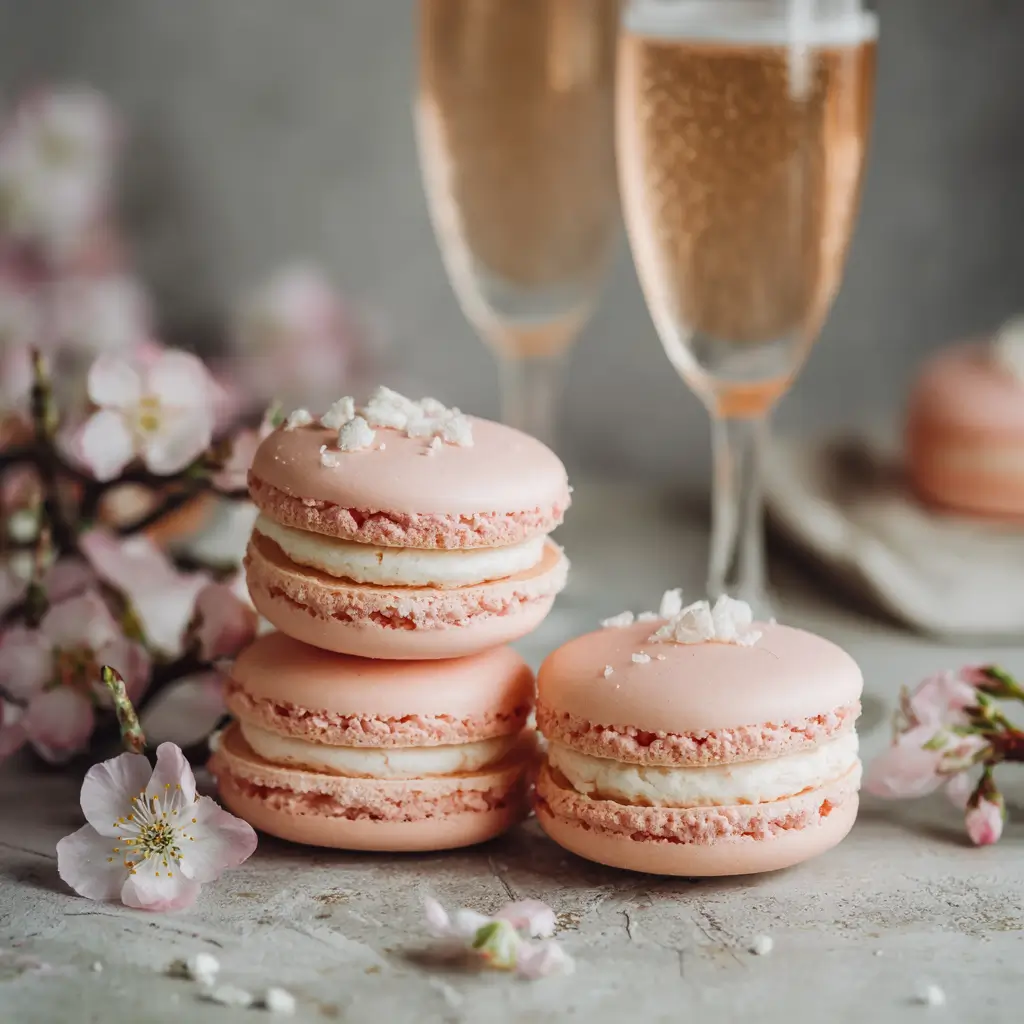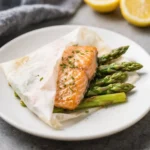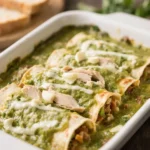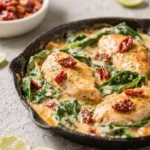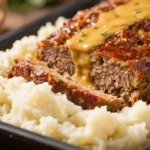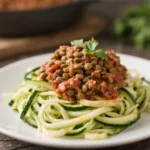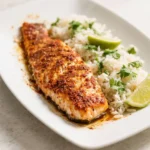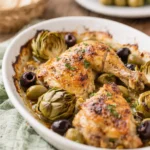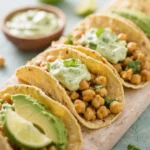Champagne Macarons: A Sophisticated Treat for Every Occasion
Champagne macarons are a luxurious twist on the classic French confection, blending delicate almond meringue shells with a refined champagne-infused filling. These elegant treats are perfect for weddings, bridal showers, New Year’s celebrations, or simply as a gourmet indulgence. Combining the lightness of traditional macarons with the effervescence and sophistication of champagne, these cookies offer a flavor profile that is both subtle and complex. Whether you’re an experienced baker or a novice in the kitchen, this guide will walk you through every step to create flawless Champagne Macarons at home.
The History of Macarons
The origins of macarons trace back to Italy, where they were first created in the 8th century before being introduced to France by Catherine de’ Medici’s pastry chefs during her marriage to King Henry II in the 16th century. The modern-day “macaron” as we know it—two smooth almond meringue shells sandwiched around a creamy filling—was popularized in Paris in the early 20th century by Pierre Desfontaines of the famed Ladurée bakery. Since then, macarons have evolved into a canvas for creative flavors, and Champagne Macarons represent one of the most refined and celebratory versions of this beloved treat.
Ingredients Breakdown
- Almond flour: Provides structure and the signature nutty flavor. Must be finely ground and sifted to ensure a smooth texture.
- Powdered sugar: Adds sweetness and helps achieve the glossy finish of the macaron shell.
- Egg whites: Provide lift and stability when properly aged and whipped into a meringue.
- Granulated sugar: Used to make a sugar syrup that stabilizes the meringue.
- Water: Helps dissolve the granulated sugar into a syrup.
- Food coloring (optional): Adds visual appeal; gel-based colors are recommended for best results.
- Champagne or sparkling wine: Infuses the ganache or buttercream with a light, bubbly essence.
- Dark chocolate (for ganache variation): Balances the tartness of the champagne and adds depth.
- Unsalted butter (for buttercream variation): Creates a silky, rich filling.
- Vanilla extract: Enhances overall flavor complexity.
Step-by-Step Recipe
- Prepare your equipment: Line baking sheets with parchment paper or silicone mats. Set aside a piping bag fitted with a round tip.
- Sift dry ingredients: In a large bowl, sift together almond flour and powdered sugar. Toss gently to combine and set aside.
- Whip egg whites: In a stand mixer, whip aged egg whites until foamy. Begin adding granulated sugar slowly while whipping to form a meringue.
- Cook sugar syrup: In a saucepan, heat water and sugar over medium-high heat without stirring until it reaches 247°F (soft-ball stage).
- Combine meringue and syrup: With the mixer running, carefully pour the hot syrup into the meringue. Continue whipping until stiff, glossy peaks form and the bowl cools to room temperature.
- Incorporate color and dry mix: Fold in food coloring if desired. Add half the almond mixture to the meringue and fold until combined. Repeat with remaining almond mixture.
- Pipe the batter: Transfer the macaron batter to a piping bag and pipe uniform rounds onto the prepared trays. Tap the trays firmly on the counter to release air bubbles.
- Restate the shells: Let the piped shells rest at room temperature for 30–60 minutes until a skin forms and they no longer stick to the touch.
- Bake: Preheat oven to 300°F (150°C). Bake one tray at a time for 14–16 minutes. Allow shells to cool completely before removing from the mat.
- Make the filling: For champagne buttercream, beat softened butter until fluffy. Gradually add powdered sugar and champagne, mixing until smooth. Alternatively, for a ganache, heat cream and pour over chopped chocolate with champagne; let sit and whisk until smooth.
- Assemble the macarons: Pair similar-sized shells and pipe or spread filling onto one side. Gently press the other half on top.
Tips for Perfect Macarons
- Aged egg whites: Refrigerate egg whites for 24–48 hours before use for better volume and stability.
- Consistent folding technique: Fold batter in a circular motion until it flows like magma—thick but fluid enough to spread slightly when dropped.
- Resting is crucial: Skipping this step can lead to cracked shells or uneven feet formation.
- Oven temperature: Use an oven thermometer to ensure accuracy. Even slight variations can affect results.
- Maintain even piping size: Use a template under your parchment paper for consistent sizing.
- Maturation period: Store assembled macarons in the fridge overnight for improved texture and flavor.
Variations and Customizations
- Prosecco or Cava: Substitute champagne with any sparkling wine for a similar flavor profile.
- Fruit infusions: Add raspberry purée or strawberry powder to the filling for a fruity twist.
- Chocolate Champagne Ganache: Incorporate dark or white chocolate into the ganache for a richer experience.
- Lavender Champagne: Infuse the syrup or buttercream with culinary lavender for a floral note.
- Pink Champagne: Use rosé champagne and pink food coloring for a romantic hue ideal for Valentine’s Day or bridal events.
Health Considerations and Nutritional Value
Champagne macarons are naturally gluten-free (if made with certified GF almond flour and powdered sugar), making them a great option for those avoiding gluten. However, they are high in sugar and calories due to the sweetened shells and buttercream or ganache filling. A single macaron typically contains around 70–100 calories, depending on the filling used. To lighten the recipe, consider using a reduced-sugar buttercream or alternative sweeteners like erythritol. Additionally, since alcohol evaporates during the baking process (for ganache or filling), these macarons are non-alcoholic, though they retain the aromatic notes of champagne.
Ingredients
Makes approximately 24–30 macaron sandwiches
For the Shells:
- 100g (1 cup) almond flour
- 200g (2 cups) powdered sugar
- 75g (5 tbsp) egg whites (about 3 large egg whites), aged
- 100g (½ cup + 2 tbsp) granulated sugar
- 30ml water
- Gel food coloring (optional)
For Champagne Buttercream Filling:
- 115g (½ cup) unsalted butter, softened
- 200g (1¾ cups) powdered sugar
- 2–3 tbsp champagne or sparkling wine
- ½ tsp vanilla extract
OR For Champagne Chocolate Ganache:
- 100g dark chocolate, finely chopped
- 75ml heavy cream
- 1–2 tbsp champagne
Directions
- Preheat oven to 300°F (150°C) and line two baking sheets with parchment paper or silicone mats.
- Sift almond flour and powdered sugar together into a large bowl. Mix well and set aside.
- In a saucepan, combine granulated sugar and water. Heat over medium heat without stirring until it reaches 247°F (119°C) on a candy thermometer.
- Meanwhile, place egg whites in the bowl of a stand mixer and begin whipping on medium speed until foamy.
- Once the sugar syrup reaches the correct temperature, slowly pour it into the meringue while continuing to whip on high speed. Keep whipping until stiff, glossy peaks form and the bowl feels cool to the touch.
